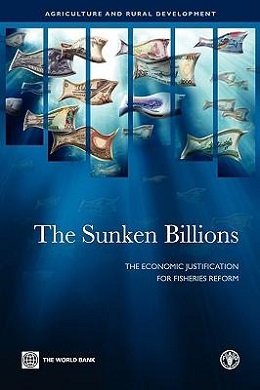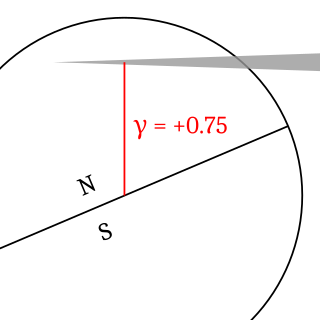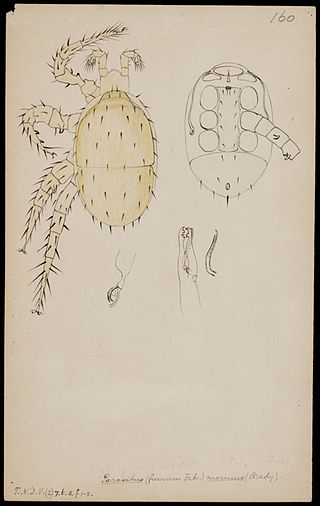Jean Meeus is a Belgian meteorologist and amateur astronomer specializing in celestial mechanics, spherical astronomy, and mathematical astronomy.
49 Andromedae is a star in the constellation Andromeda. 49 Andromedae is the Flamsteed designation though it also bears the Bayer designation A Andromedae. It is visible to the naked eye under good viewing conditions with an apparent visual magnitude of 5.269. The distance to 49 Andromedae, as determined from its annual parallax shift of 10.4 mas, is around 314 light-years. It is moving closer to the Sun with a heliocentric radial velocity of −11.5 km/s.
Permotipula is an extinct monotypic genus of protodipteran insect which contains a single species Permotipula patricia. The only specimen of Permotipula was found in Late Permian strata of the Newcastle Coal Measures between the towns of Belmont and Warners Bay on the eastern side of Lake Macquarie, New South Wales, Australia and named by Robert J. Tillyard in 1929. The specimen consisting of a single well preserved wing, was considered lost after the death of Tillyard in 1937. The loss of the specimen and the mention by Tillyard of a second insect fossil from the same site, later described as Robinjohnia tillyardi resulted in much confusion regarding the taxonomic affiliations of P. patricia. Robinjohnia, a four winged insect which is now placed in the order Mecoptera. The P. patricia type specimen was found in the Tillyard collection which is housed at the British Museum and reexamined by R. Willmann in a 1989 paper. A second species, P. borealis was named by O.M. Martynova in 1961 from a small wing specimen found in the Kuznetsk Basin, Russia. This species was moved, however, in 1989 by R. Willmann to the monotypic genus Permila and is now considered a probable early mecopteran.

Didi Seven, and DiDiSeven or DiDi7, and Didi7, is a stain remover made famous by its infomercial television marketing campaign.

Buckeystown is an unincorporated community and census-designated place (CDP) in Frederick County, Maryland, United States. As of the 2010 census the population was 1,019. Buckeystown Historic District and Buckingham House and Industrial School Complex were listed on the National Register of Historic Places in 1982. Carrollton Manor was listed in 1997. Former Congressman Roscoe Bartlett lives on a farm in the town.

Hydrobiidae, commonly known as mud snails, is a large cosmopolitan family of very small freshwater and brackish water snails with an operculum; they are in the order Littorinimorpha.

Panorpa is a genus of scorpion-flies that is widely dispersed, especially in the Northern Hemisphere. However, they do not occur in western North America. Thirteen species occur in eastern Canada.

NGC 7635, also known as the Bubble Nebula, Sharpless 162, or Caldwell 11, is an H II region emission nebula in the constellation Cassiopeia. It lies close to the open cluster Messier 52. The "bubble" is created by the stellar wind from a massive hot, 8.7 magnitude young central star, SAO 20575 (BD+60°2522). The nebula is near a giant molecular cloud which contains the expansion of the bubble nebula while itself being excited by the hot central star, causing it to glow. It was discovered in November 1787 by William Herschel. The star BD+60°2522 is thought to have a mass of about 44 M☉.

Celestial cartography, uranography, astrography or star cartography is the aspect of astronomy and branch of cartography concerned with mapping stars, galaxies, and other astronomical objects on the celestial sphere. Measuring the position and light of charted objects requires a variety of instruments and techniques. These techniques have developed from angle measurements with quadrants and the unaided eye, through sextants combined with lenses for light magnification, up to current methods which include computer-automated space telescopes. Uranographers have historically produced planetary position tables, star tables, and star maps for use by both amateur and professional astronomers. More recently, computerized star maps have been compiled, and automated positioning of telescopes uses databases of stars and of other astronomical objects.
Russell Merle Genet is an American astronomer, who specializes in photometric observations and probing of very short-period eclipsing binary stars.

Brachypylina is a group of oribatid mites, variously listed as a suborder, infraorder, or a cohort.

Michael Leopold Lukas Willmann was a German painter. The Baroque artist became known as the "Silesian Rembrandt", "Silesian Apelles" or "Silesian Raphael" and has been called the greatest Silesian painter of the baroque period.

The Sunken Billions is a study jointly published in 2008 by the World Bank and by the Food and Agriculture Organization of the United Nations (FAO). The report shows that the difference between the potential and actual net economic benefits from marine fisheries is about USD 50 billion per year or some USD 2 trillion over the last three decades.

Gamma of an eclipse describes how centrally the shadow of the Moon or Earth strikes the other body. This distance, measured at the moment when the axis of the shadow cone passes closest to the center of the Earth or Moon, is stated as a fraction of the equatorial radius of the Earth or Moon.
Ologamasidae is a family of mites in the order Mesostigmata. There are more than 40 genera and 470 described species in Ologamasidae.
Rhodacaridae is a family of mites in the order Mesostigmata.
Rhodacarus is a genus of mites in the family Rhodacaridae. There are more than 20 described species in Rhodacarus.
Digamasellidae is a family of mites in the order Mesostigmata.

Halolaelapidae is a family of mites in the order Mesostigmata.

George J. Willmann was a Jesuit regarded as the "Father of the Knights of Columbus in the Philippines". Born in the United States, he was granted Filipino citizenship due to his missionary work in the Philippines.











